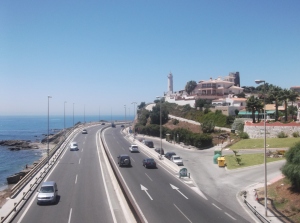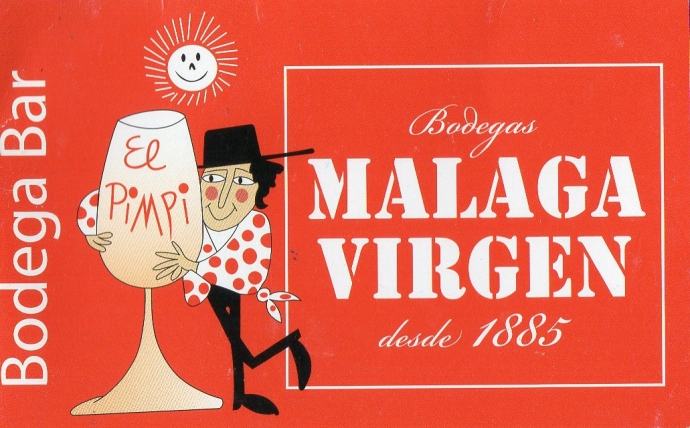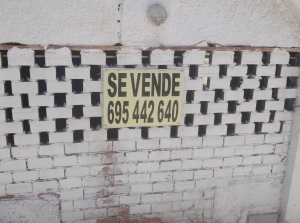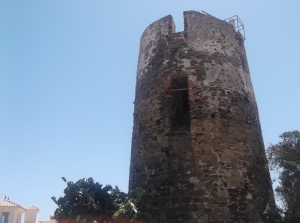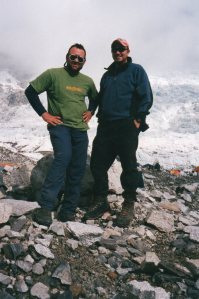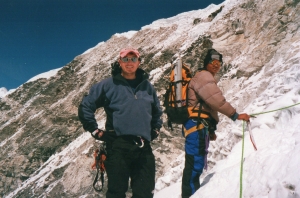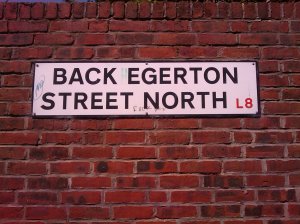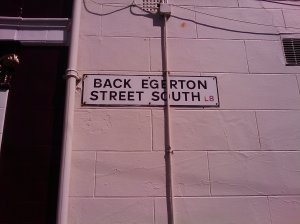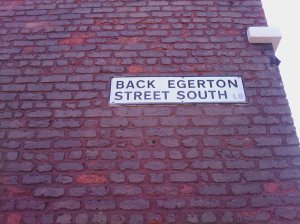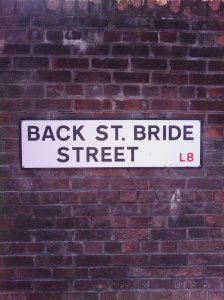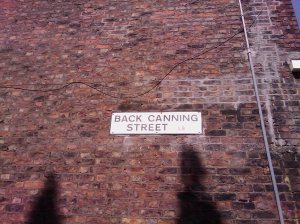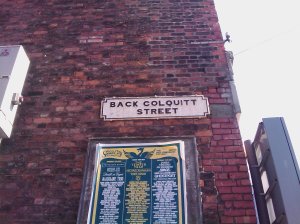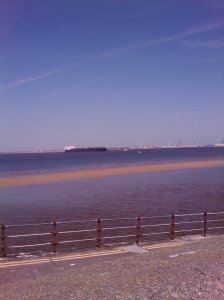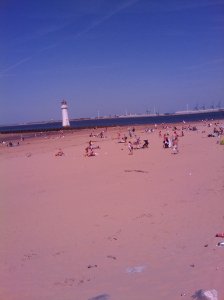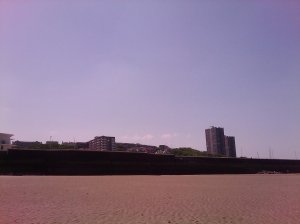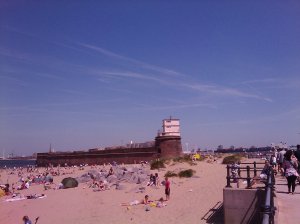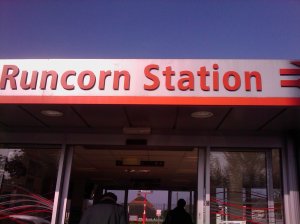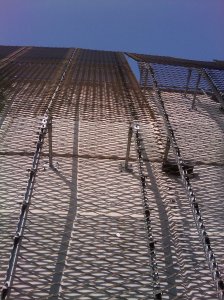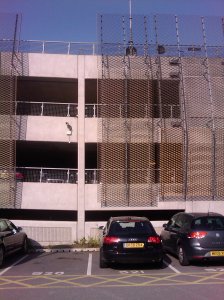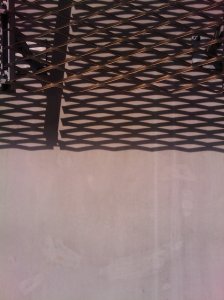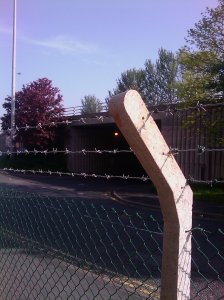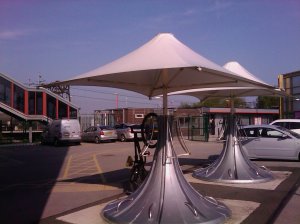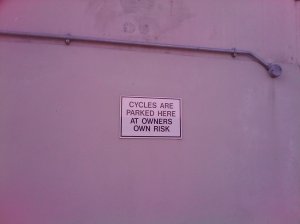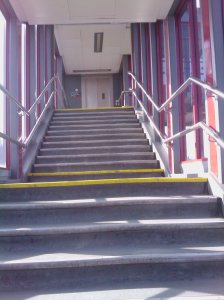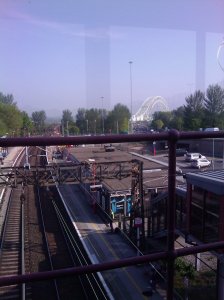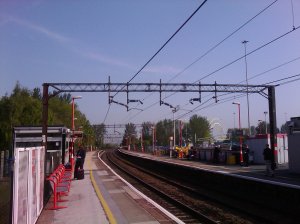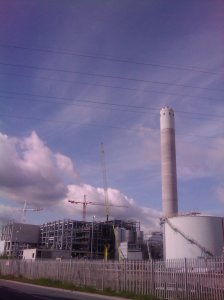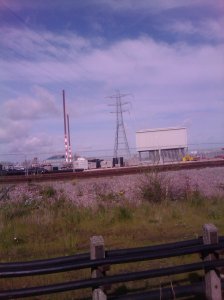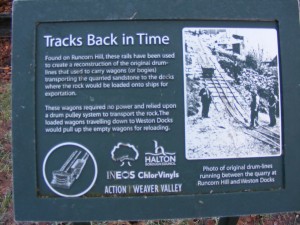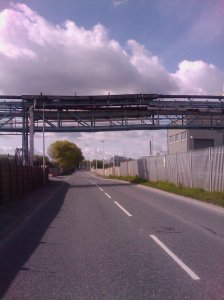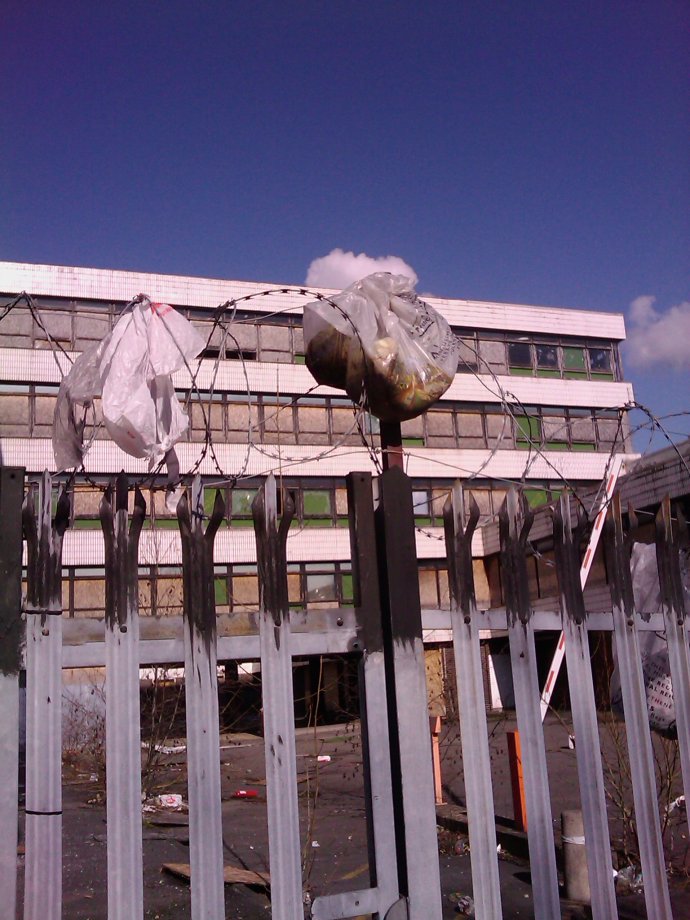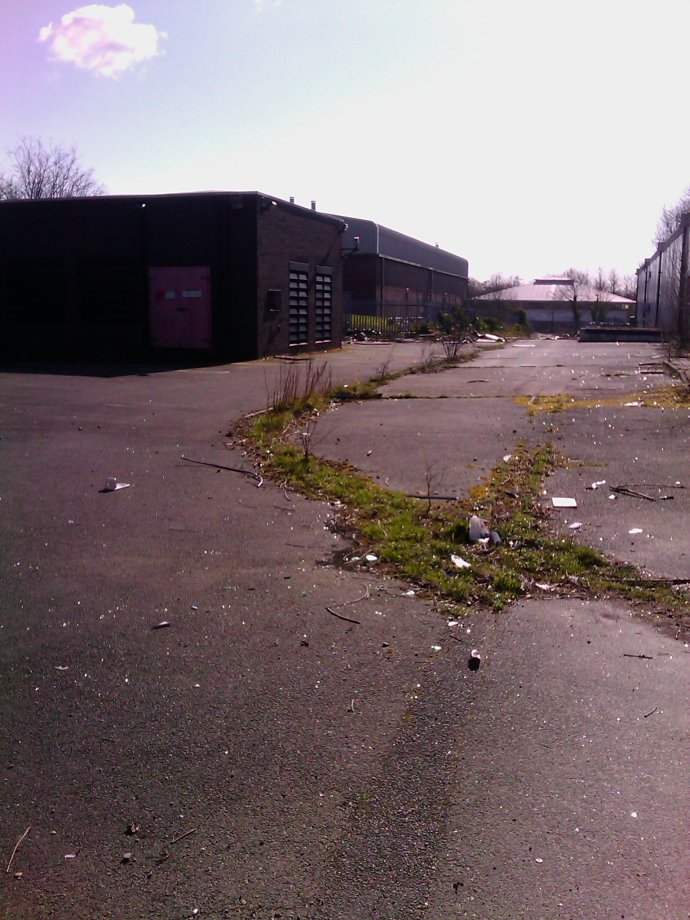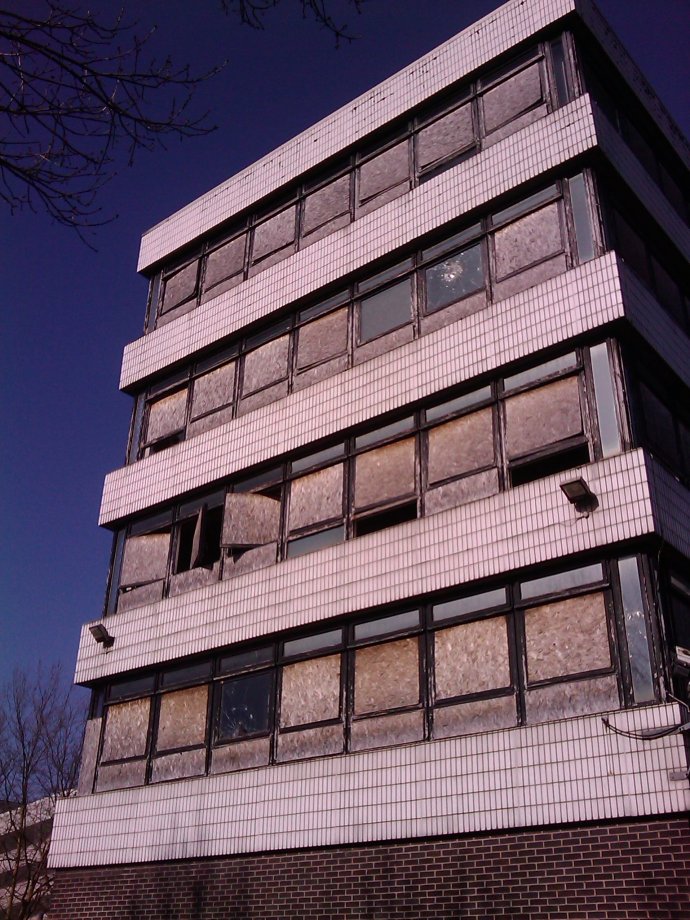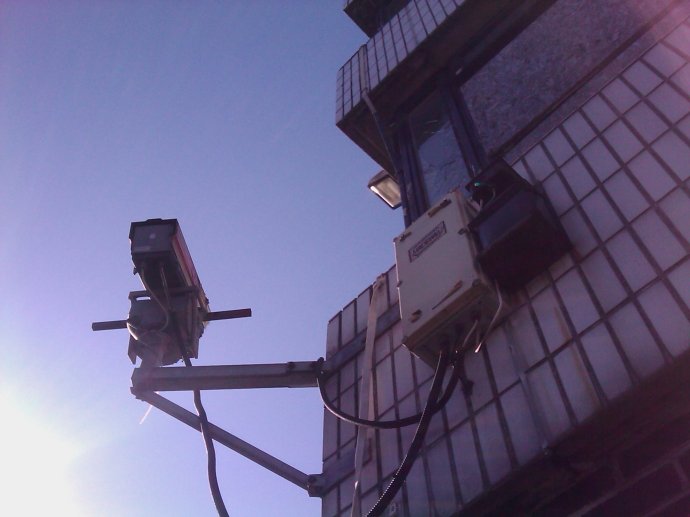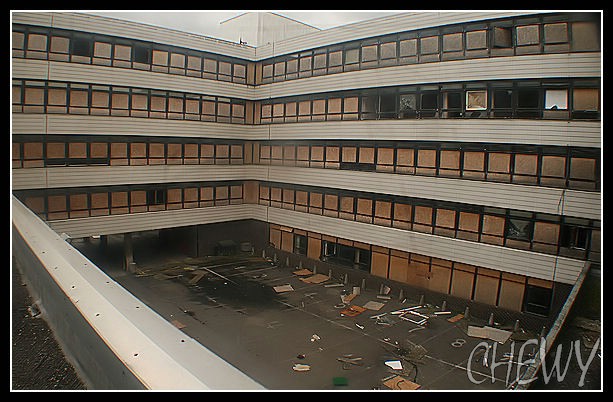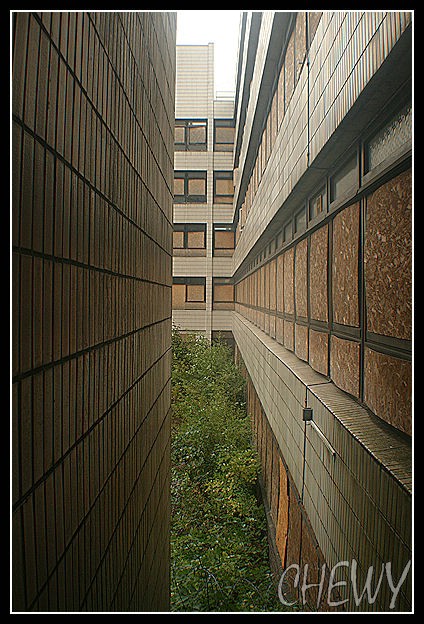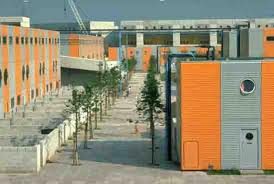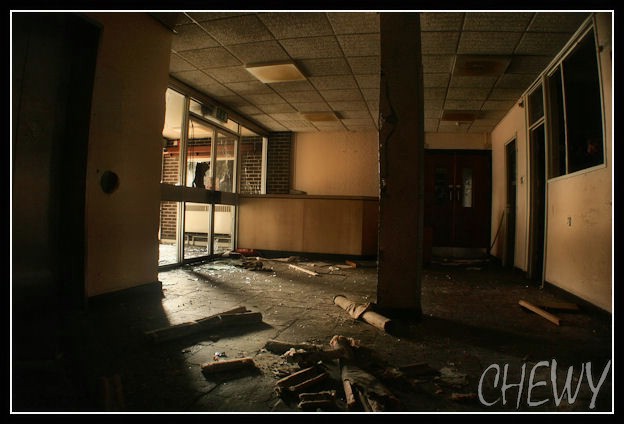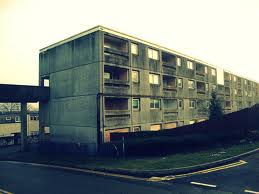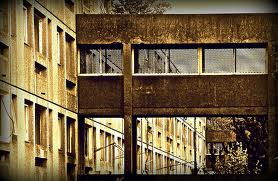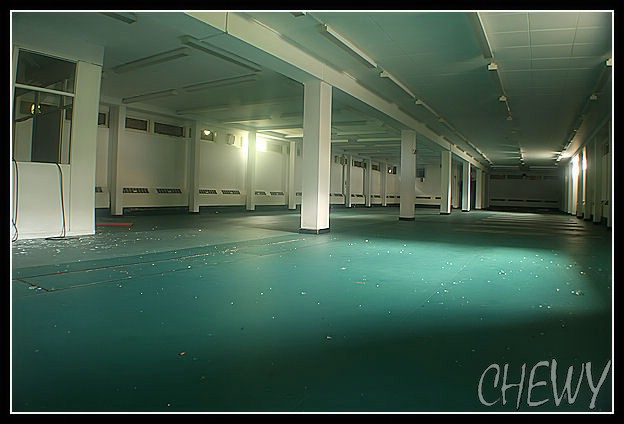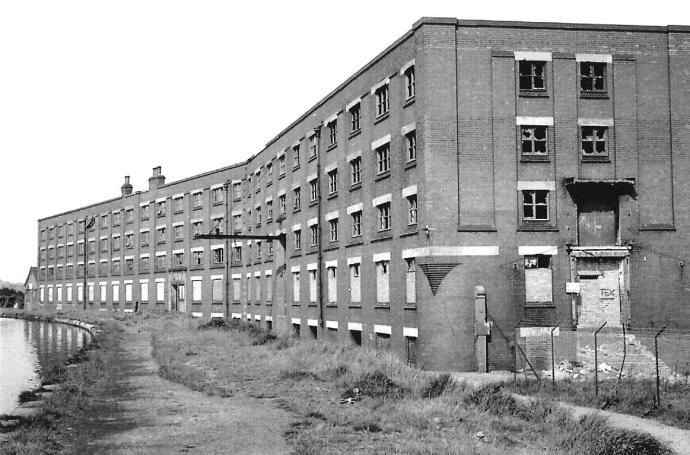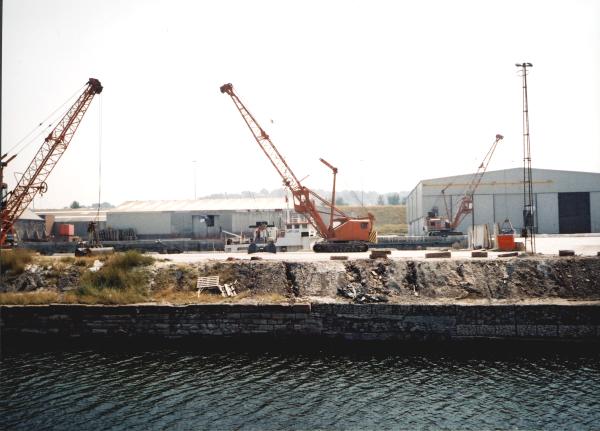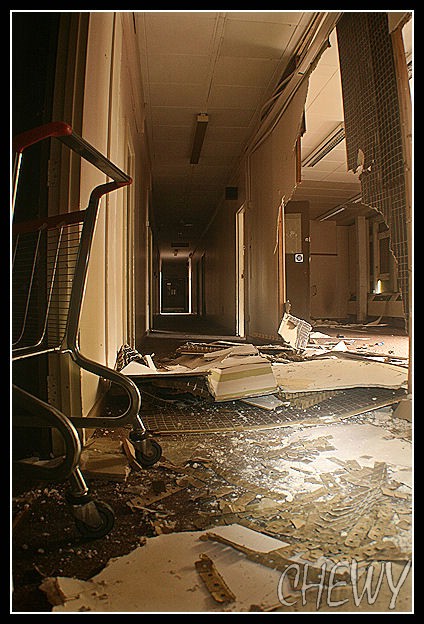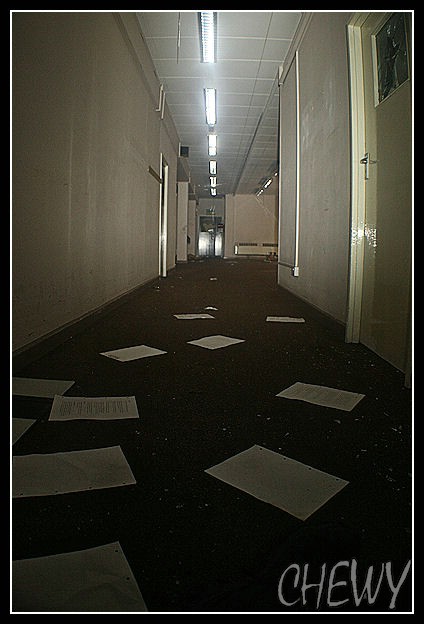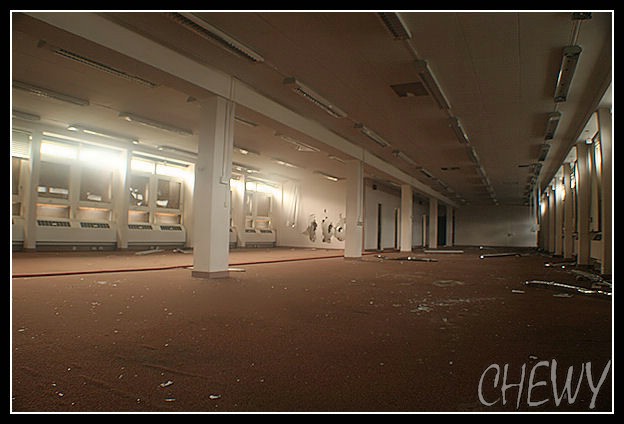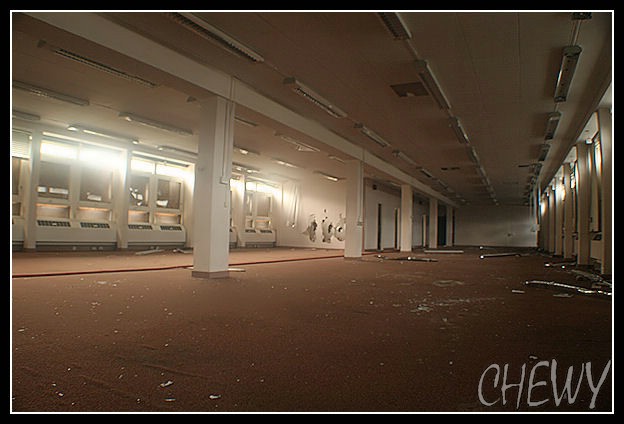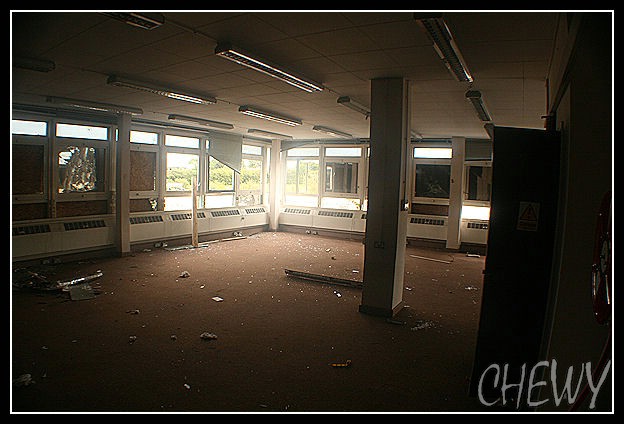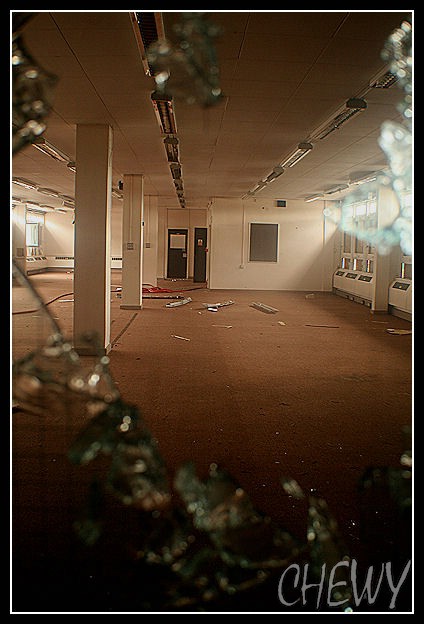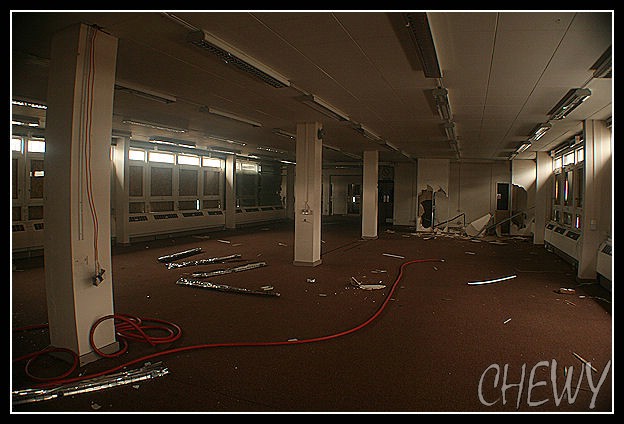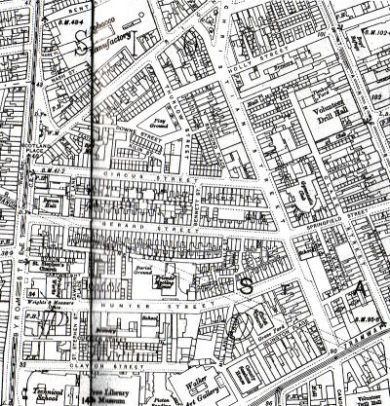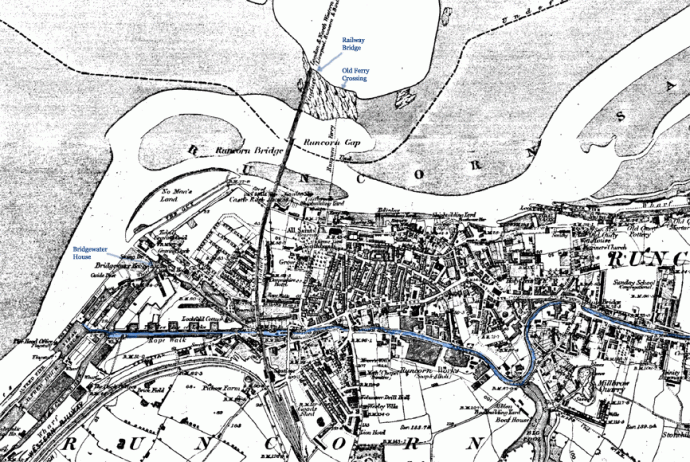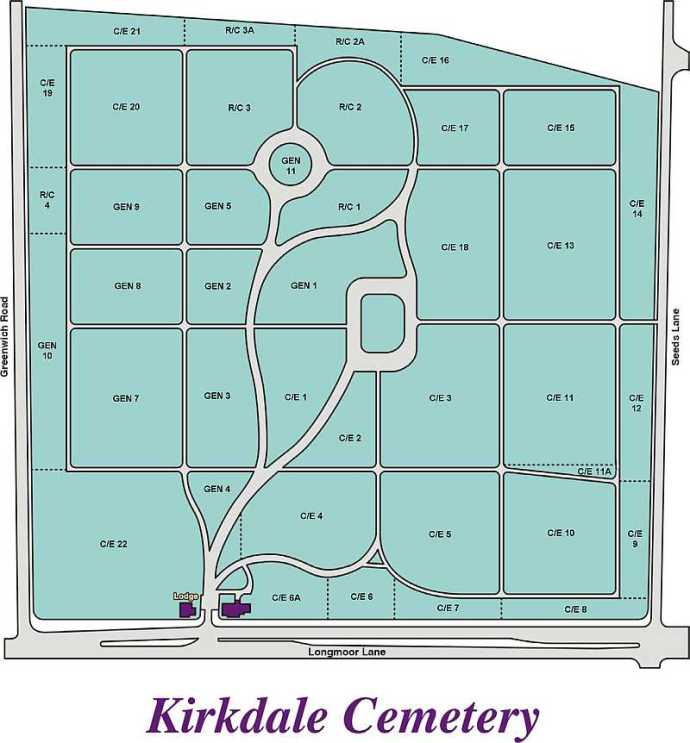I walk the Autovia Del Mediterraneo (or to give it its less glamorous sounding route name the N340) from El Faro to La Cala De Mijas, through the segregated hillside Urbanicazion where British, German, Scandinavian and Dutch ex-pats rub shoulders with wealthy Spaniards on the Costa del Sol. This cliched corner of ancient Andalucía has seen many invasions; the Tartessians, Phoenicians, Greeks, Romans, Visigoths, Moors and Gypsies all leaving traces of their cultural DNA. Yet, walking along this cracked pavement along the main Malaga to Marbella motorway, maybe we are witnessing the end days of the final invasion before the coast and the mountains return to some semblance of the pre-tourist era.
All along the road, with its flimsy looking barriers, cracked and defiled pavements, ugly flyovers and relentless, heavy traffic, this symbol of modern Spain, the fast flowing trade route along the south coast, symbolises the way it is now and the way it is likely to be in a few years time. As I break in my new Adidas sandals walking down the Calle Cordoba, along the Calle del Sol and down the Calle Bilbao, I pass the area’s two eateries and drinking holes, the British ‘Carlton Bar’ and the Spanish ‘Dona Maria’, separated by a battened-up, former car hire outlet and a small Supermercado staffed by British ex-pats. There’s a communal swimming pool and a more up-market restaurant, the El Patio to the back of these buildings and all around there is a misleading tranquility as the quiet villas and casas doze in the heat of another Andalucian summer.
The owners of our apartments, a couple who’ve been over here for the past 8 years warn us to keep our doors locked at all times and hand us a bunch of keys that lock gates, and doors, padlocks and shutters. Gypsies! The whole area is paranoid, each and every home has some kind of warning sign to deter robbers – ‘Atecion Alarma!’ – and each window is secured by iron grilles or shutters. As I leave the apartment I have to lock and padlock four separate doors and gates and the overall impression of a community that is pretending not to be terrified as unemployment and poverty grows and people less fortunate become angrier and more desperate. This is a community living in fear, awaiting the apocalypse yet still keen to slag off what they left behind; the benefit cheats, the slackers, the immigrants, the violence.
Whether exaggerated or not, the fear of crime is real enough and these enclosed wealth ghettos operate like any other gated community with an atmosphere of suspicion, surveillance and security. It’s the same paranoia that fuels the murder of innocent black kids walking home from the shop in Miami by self-elected ‘patrolmen.’ The same mindset that allows armed police to shoot dead an innocent Brazilian electrician in London fearing he may be a terrorist. As the Olympics begin back in Britain, surface to air missiles have been installed on the roof of an East London tower block. Thousands of soldiers, policemen, private security guards and the mass media have been employed to sustain an atmosphere of hysterical terror.
The British establishment, more than any other political-economic elite uses the threat of bombs and bullets to control and suppress their citizens and to pour scorn on anyone who questions their motives. ‘If you are innocent, you have nothing to fear’ is their stock Orwellian response that justifies CCTV on streets, motorways, railway stations, airports, ferry terminals, cabs, trains, busses, shopping precincts, restaurants, pubs, pools, toilets.
Even in the US, civil liberties are taken as basic human rights, the right to live your life free from constant observation. Wire tapping and covert filming is difficult enough for the CIA or FBI to obtain even for bona fide terror suspects and hardcore gangsters, never mind juvenile shoplifters and bored weed smoking youth. Tyranny doesn’t impose itself in one single putsch but a thousand tiny increments.
‘Slow Down!’ ‘Cut Your Speed!’ ‘Belt Up!’ ‘No Smoking!’ ‘No Drinking’ ‘No Entry’ ‘No Ball Games’ ‘Sit Down!’ ‘Go Home!’ ‘Just Do It!’ ‘Just Buy It!’ ‘Don’t Answer Back!’
Inner Controlled Zone. No Parking. Outer Controlled Zone. No cycles. Resident Permits Only. Max Stay 30 minutes. No return within 2 hours.
Eat this. Drink that. Don’t eat this. Don’t drink that. No smoking. Smoking Kills. No litter. Stub It Out!
The recorded loop of the self-serve check out :
‘please place your items in the bag, authorization required for this item, please wait for assistance’
The train station tannoy :
‘CCTV is operational in all carriages for your safety and security’
‘any unattended item and may be taken away and destroyed by security personnel.’
On our journey from Manchester airport we are treated with contempt by the stressed out Border Agency staff as they check bags, pockets, shoes, wallets, scan bags and passports, search suitcases, test perfumes and pills, exchange glances and hand signals, order us from A to B, do this, do that, stand here, sit there, gate 13, queue here, boarding card, passport, boarding card, passport, name check, face check, eye scan, thumb print, DNA swab, arse search. Drugs, bombs, drugs, guns, drugs, booze, drugs, ciggies, drugs, aftershave, drugs, tortoises, drugs, illegal immigrants. Contraband, untaxed, over here, taking jobs, over here, claiming benefits.
In Spain, despite ETA campaigns and the largest concentration of hardcore criminals in Europe, there is a feeling of freedom, the air and the spaces seem uncontaminated by authoritarian observation. The economic migrants from good old Blighty don’t consider themselves as such of course, no they are net contributors who have paid their dues and their taxes and now have the right to live in a foreign country without having to speak a word of the language and become offended if the locals speak to them in their native tongue. Exactly the kind of aloof cultural isolationism they criticize ‘immigrants’ for back home.
As I get to the main road, Fuengirola is a few miles to the north and Marbella is 30 odd kilometres to the south. It’s early on a late July Saturday morning and the path is empty save for a few sweating joggers wired to their digital defibrillators and the odd cyclist. The road however is busy. Very busy. I do a quick spot check on the make of vehicles that pass in a few minutes; Renaults seem to be the most popular, followed by Ford, Peugeot, Seats, Opels, then the usual Teutonic mid-range stalwarts; VW, BMW, Mercedes, Audi, the odd flash 4×4, Range Rover, Mitsubishi and Jag. Scania trucks seem to be popular, the odd biker, scooter rider pass and a cyclist in full Tour de France lycra rig out forces the traffic to swerve on this dangerous road with its vehicles zooming past at 100km per hour.
That old Situationist slogan ‘sur la pave, the plage’ is literally true here as the autovia runs directly adjacent to the narrow stretch of rough sand that passes for the beach in El Faro. Imagine if you tried sunbathing next to the M62, that’s what it’s like for those who can’t be bothered to travel up to Fuengirola or down to La Cala de Mijas. As I walk past low level luxury apartments with fancy cars parked outside, the slip road sections off beach side villas with names like ‘Casa Marguerita’ and ‘Beach Club.’ The wall for ‘Beach Club’ is wired up with CCTV a there’s a huge crack in the wall opening up from top to bottom. Like many others it is ‘Se Vende’ – for sale – a portent that all is not quite as it seems here.
Scrubby beaches shelter families under gazebos, one appears to have been here all night and maybe owns or rents a stretch out. The dad dozes whilst the daughter rakes over the narrow isthmus between the rocks and the road as three fishing rods stand sentry in the sand. Further up there’s a Nudist beach signified by a pastiche of the Robe di Kappa logo, a man and a woman sat back to back, knees raised separated by a beach brolly. It is deserted. Too early for the naturists and gay lads who usually populate the playa. Bird shit archipelagos splatter the pavement at the base of each street light, juvenile gulls resting on top, still half asleep as the sun begins to warm their feathers.
Up the hills, new developments spread like cancer stalled by the painful chemotherapy that austerity has brought. All along the road, ‘Se Vende’ signs crop up on road side shops and houses. At a bridge over a small rivulet leading to the beach, I spot a huge cat wandering through weeds and bullrushes as birds squawk a warning in the trees. Whitewashed walls give way to bamboo thickets and close to the foot of the next flyover, rather than the usual wet paw prints of cats and dogs, someone has etched a Minoan style athlete into the cement, Palm trees line the hills, their parched branches hanging down in matted brown clumps like the beards of vagrants.
Papa Luigi’s Pizzeria is next to the Farmacia and a stretch limo is parked outside a shuttered shop. ‘The Hut’ advertises 2000 channels of sport whereas Streets Of London pub has its target audience firmly marked out. We’re on the outskirts of La Cala now and I decide to turn back as we’re off to Malaga today and I’ve gone further than I’d intended (and both of my big toes are cut from breaking in my new plazzy flip flops). On the opposite side of the road, under the roughly quarried rock, rusting bolts pierce the pavement in two rows of six, forming a miniature ruined Roman temple. It’s obviously a health and safety hazard as are the massive cracks, stone eruptions, stray cables and open electricity boxes but maybe that’s just my Protestant prudishness and Nordic need for order kicking in.
After having a strange altercation with a Spanish speaking lad dropping off a stunning girl outside the entrance to the El Chapparal urbanizacion (he shouts something to me and waves his mobile phone and I immediately take him for a pimp of some sort and just shrug), I pass a dead and decaying cat left to fester unloved on the pavement. Its head has been covered by a deflated football. I wonder if this is some ancient mafia warning or a religious offering. Did the ball got there by accident or had been deliberately placed there? The football headed, rotting cat disturbed me for a few seconds.
This isn’t a metaphor by the way, although I intend to use it as one. If Spain is the body of the cat, being eaten away from the inside by a corrupt and incompetent clique of politicians and capitalists, then the nation’s all-conquering football team is the face of the country that King Juan Carlos and the government spin masters want to present to the rest of the world. Yet, the ball is deflated and Del Bosque like Pep Guardiola (as well as the fans) know this sublime level of perfection cannot be sustained for much longer before complacency and competing egos, ageing legs and stifling tactics accelerate decline.
The poetry of geometry, the symmetry of form, the glazed finish of perfection; Moorish tiles and Spanish soccer are a counterbalance to the ugly scrub of the pavement and the horrendous, half empty high rises and apartment blocks that line the roads and hills across the Costa del Sol. They offer a justification for human concepts of aesthetic beauty and solid application. Those ‘total football’ seeds planted by the adopted Catalan, Johan Cruyff and his Dutch masters of the 70s have born beautiful fruit 40 years later with the current generation of Spanish players.
The ability to switch position and formation at will, the use of trigonometric triangles to defeat the technicians and cynics of Germany and Italy. Their fluidity of line and elegance of shape as beguiling as a Miro painting, they realise that, more than mere showboating, possession in football, as in life, is nine tenths of the law. This collection of Catalans, Basques and the odd Castillian understand that keeping the ball and winning it back is all that is required to win football games. Without the devastating pace of Real’s Portuguese striker, Ronaldo or the sublime close control of Barca’s Argentine genius, Messi, the Spanish team operate in packs, hunting down the opposition when they lose possession and then tire and frustrate them with their abstract angles and ESP ping pong.
Speed of thought and movement has been the Barca way for years and as a Man United fan, those humiliations in Rome and London of 2009 and 2011 reminded me of the drubbing Juventus dished out to Alex Ferguson’s novice European squad of the 90s. It was embarrassing to see the players of the quality of Rooney and Scholes reduced to chasing shadows as the Barca team tormented them with practice session games of ‘keepsy.’ Yet it also should’ve taught them a lesson too. This is the yardstick you need to emulate. They didn’t. They can’t. Not in the Premiership where thuggery and endeavor are still admired more than art.
The trip to Malaga involved a bus ride to Fuengirola on the 220 and a train on the Linea C1 through the high rise tourist favellas of Benalmedina and Torremolinos. Paul, a relative of my wife and his boyfriend, Juan, a local lad from Cordoba act as guides during our stay. As my wife, daughter and nephew are directed to the local shopping mall, Paul, my in laws and myself go to visit the cathedral and the Alcazaba, the 11th century Moorish castle.
It’s a long walk past the huge queue of taxis outside the railway station, where drivers stand in circular covens looking simultaneously bored and pissed off. They throw their arms about, sit on bonnets, awaiting fares, awaiting the downfall of civilization. Spanish unemployment is the highest in Europe and if the European Central Bank hadn’t bailed out the country’s banks, who knows where they’d be? Then it’s a trek along a nondescript street of tenements and shop fronts and across a bridge over a dry river bed where locals walk their dogs. We cross the road then do a right along a busy street full of busses ferrying tourists and shoppers to our destination, the old port area where the architecture becomes grander and the people whiter.
The cathedral has been built in stages over the past 500 years but is still an impressive building, especially on the inside where various grottos and ghettoes offer absolution to earth mother worshippers who can purchase votive candles for one euro from a slot machine. The candles are short and stumpy and all have exactly the same fake pattern of beaded wax running down their sides. I’d like to visit the factory that produces these identical wax offerings and leaf through their products brochure. The slot machine reminds of the scene in Toy Story when the squeaky alien gift is ‘chosen’ by their deity, the Claw. Claw. Jaweh. Jehovah. Jah. Jesus.
Here there are statues of wood made to look like marble and statues of marble made to look like flesh. The homoerotic scenes of torture and terror, of martyrdom and murder, flagellations, crucifixions, captured in oil and glass and stone tell a history of colonisation and reverse colonisation, Egyptian to Greek, Greek to Roman, Roman to Judean, Judean back to Greek and Roman, Greek to Arab, Arab to Castillian, Castillian to Aztec. At the heart of the story is not an obscure Jewish priest but gold. These temples are cemented with blood and spunk, male ambition, male lust, male pride, male ego. Brick upon brick, stone upon stone, lie upon lie. Greed is the engine of war and war is the engine of religion.
The Roman paganism that calls itself Catholicism is only a superimposed pantheism celebrating Caesar, vestal virgins, celibate priestly cults dedicated to saints, and Bacchus. In vino, veritas. The religion of the Vatican as it is observed by the Spanish and indeed the Italians is not austere and puritanical but sensuous and tactile. It is intended to invoke wonder and marvel, it is as superficial and supernatural as any other form of soil and ancestor worship. The confession is a sell out to the venal murderers and torturers who built these monuments to mankind’s cruelties. Pass us the gold and we’ll forgive the rape, the theft, the blood letting with ten Hail Marys, two Our Fathers, three sugars and a splash of milk love.
One altar features the Masonic pyramid and eye in recognition of those men who actually built these temples. It was the master masons who first broke away from the medieval fiefdoms that required them to work for their local squires, thus allowing them to travel freely around Europe plying their trade. The masons may well have began as an artisan guild with their own rites, rules and regulations but, as with any power structure, they became colonized by those who need to keep all systems of control within their sphere and now the very word ‘masonic’ is a synonym for cronyism. The present Grand Master of the United Grand Lodge of England is Prince Edward, Duke of Kent (first cousin of the queen). Not only have the royals got the state church, the armed forces, the political executive, the civil service and the judiciary under their ‘benign’ yoke, even the supposedly ‘occult’ Masons can’t escape the monarchist puppet masters.
Secret handshakes and strange rituals and a shared desire for ‘order,’ an order that benefits their own wealth, bonds the establishment. You scratch my back, I’ll award you the council contract. You keep a lid on the unions, I’ll reward you with a knighthood. You donate millions to the party, I’ll overlook those pesky taxes. How many masons these days are actually masons? The symbolism of ancient crafts; the set square, compass, block and tackles that built pagan pyramids and Catholic cathedrals are now as redundant as the priests who have been replaced by uniformed security guards patrolling the inner sanctums making sure we don’t use flash on our cameras.
In the Alcazabar, the Muslim worship of abstraction, water as purifier and holy duty has left its mark with fortress gardens and perfumed pavilions. The walls overlook the port with its huge cranes and the bullring. Here is Spain caught between the past and the future. The torture of animals as part entertainment, part blood letting ritual is now deemed not only un-PC but un-EC. The European Union, that protectionist trade cartel against the ‘emerging economies’ has rules about such things and if they are not obeyed then the ships may be ordered to stop docking with their cargoes of tourists and consumer goods.
The Roman ruins at the foot of the old walls lead us to a bodega Paul wants us to visit called ‘El Pimpi.’ Inside the place is rammed and its mixture of sherry barrels, huge fiesta posters from the 20s and 30s, a frantic kitchen area with hooved hams being carved in situ and a celebrity mosaic of customers adjacent to the bar, makes me feel as if I am experiencing the real Spain at last. We sit outside in the courtyard area and order three types of Iberico fan, fried baby squid, salad and bottles of the sweet Malaga Virgen sherry. There’s a wedding taking place and as the guests leave their reception sherry glasses to go for their meal inside, a waitress empties what’s left of the sherry in the wooden barrel into to a large, plastic, gas canister-like container. Everything’s surface.
I’m reminded of the time we visited Seville a few years back. It was February and the weather was dreadful. The city disappointed for some reason. It seemed too modern, too clean, too clinical even though the old streets around the alcazar were great and we ate some great food. I wanted to travel to Cordoba during our stay on the Costa del Sol as, from photographs, guide books and reports from Paul, this seat of the ancient Caliphate seemed like the place I imagined Seville to be. I never got there as the distances involved were much greater than I’d expected. Instead we head for Mijas Pueblo, the small whitewashed ‘working village’ just up in the hills above Fuengirola.
Mijas Pueblo is a lovely place with charming, narrow streets, beautifully groomed horse and carriages clacking past the tourist cafes and shops, panoramic restaurants, an auditorium, a ‘working’ bullring and a cavernous church carved into a chunk of rock. The church was recently robbed of some of its wares but is still filled with enough silver and brocade to equip the Holy Roman Empire. We wander around the backstreets and do the tourist thing because we ARE tourists. We have come to gawp at the pre-tourist Spanish, to immerse ourselves in their everyday lives, if only for a few hours and observe their quaint Andalucian routines.
Men collect their daily bread in small, blue plastic bags, old women brush out their porches and dust their grilled windows, young fathers kiss goodbye to their young wives and children, teenage buckos scramble up steep paths on their motorbikes, old men sit under the shade of pine trees and chew the fat. We ooh and aah at the magnificent views over the coast, we wander around the floral gardens, we eat a selection of hot and cold tapas and sip Margeuritas and cold beers. We take photos of ourselves doing all this. This is a REAL village but it’s as phoney as any other zoo.
I’ve only ever been to Spain as a tourist, to gawp and dance, and drink and eat and swim and sun bathe. My first visit as an 18 year old scally was to San Antonio, Ibiza back in 1984. Since then I’ve been to Salou and Tenerife with my then girlfriend before we were married, then Minorca, Majorca and back to Ibiza (Santa Eulalia not San Antonio though) three years in a row with our kids. I’ve also been to Barcelona three times, all three visits happening within the space of 18 months.
Barca is my kind of city. Our first visit was with my wife, sister and brother in law in 2003. Big Al and myself went to see Barca at the Nou Camp in a night game that kicked off at 10.30. The Barca team was very average with only the bizarrely goggled Dutchman, Edgar Davids providing any kind of excitement and the atmosphere in the huge stadium was flat and subdued. Only the old fellars eating their half time foil wrapped bocadillos whilst smoking huge cigars and sipping liquor from hipflasks made me feel as if I was missing out on something.
A few months later I went with a freeloading deputation from the Liverpool Institute of Performing Arts, or ‘Sir’ Paul McCartney’s ‘fame School’ as it’s also known. We went to pick up lovely melting Dali violin statuettes for our great work with the poor and destitute kids of Merseyside on some European Social Fund/New Deal for Musicians blag. Only the urbane American LIPA director, Arthur Bernstein’s choIce of restaurants and the visit to Barcelona University saved what was essentially a typically futile back slapping session from professional parasites. The award still takes pride of place on my mantelpiece however.
My last visit was for a mate’s 40th and three separate elements of his sphere of friends, the Everton Taliban, the Huddersfield hooligans and the Terrace Retro trainer obsessives (I was in the latter category) convened at a huge hotel on the very end of one of the underground lines out of the city. A former media centre for visiting journalists covering the 92 Olympics, it was situated in an estate of high rise blocks that seemed to primarily house South American Indian migrant families, Spain’s empire of dirt haunting its elegant plazas and train platforms. We went to watch Barca again but this time they had been totally transformed by the toothy talents of Brazill’s Ronaldinho, perhaps the greatest player I’ve seen in action.
This was the beginning of great things for the club, as they eclipsed the so-called ‘Galaticos’ of their despised Castillian enemies, Real Madrid, who began to implode under the weight of expectation that so many huge transfer fees and wage demands brought. This was the New Spain of the EU miracle; sophisticated restaurants serving new age cuisine, beautiful buildings to house galleries and museums, charming old quarters prettified for tourists and locals alike. Gaudi, Picasso, El Bulli, Sagrada Familia, FC Barcelona. Catalan style and elegance. I wanted to dig a little deeper, to study the civil war in more detail, to brush up on my POUMs and Passionarias. To visit San Sebastian and Bilbao, Valencia and Vigo.
Spain was hip. Spain was the future. It was never going to last.
Most people don’t want or expect much from life; a decent place to live, a car perhaps to get from A to B, decent schools, hospitals and services, the odd technological gizmo for their leisure or to help them in their daily tasks, a week or two on holiday to escape the relentless drip, drip pressures of modern life. To eat, to drink, to fuck. What’s so bad about that?
Spain was the first foreign holiday destination for millions of Britons and the Costa Del Sol has remained as one of the most popular tourist spots in the world for decades. Stuffed donkeys, sombreros, furry bulls for the mantelpiece. Strange food, olive oil, crap beer, searing heat. Those 60s and 70s package holidays for the plebs who demanded good old fashioned Full English breakfast, fish and chip dinners and the resorts that sprang up to cater for them, now seem to exist in another era altogether.
We have become more selective, more demanding, more ‘cultured.’ We have fed on a diet of cookery programmes. We can tell the difference between extra virgin olive oil and malt vinegar. We know what to expect from a pinchos menu and can even speak the odd bit of guide book lingo, so as not to offend.
‘Dos cervecas por favor’.
We want to be treated as welcome guests, valued customers, economic necessities, not as herds of cattle to be milked out of every last peseta or Euro. The Manhattan tower blocks of Torremolinos and Benalmedina offer one form of escape to those clinging onto that 70s idyll, the fancy harbours and bars of Puerto Banus and Marbella offer another.
We were planning to visit Marbella with Paul and Juan on the Saturday before we left for home but one thing or another got in the way. The kids wanted to visit the water park in Fuengirola, so I dropped them off and went for a walk around the resort (they’re both fifteen don’t worry). Fuengirola wasn’t as bad as I’d imagined. It’s geographically and culturally half way between Torremolinos and Marbella. The promenade bars and restaurants offer Spanish, Italian, British, German food and beer, the sand is clean, the beach long and tidy, the hotels aren’t too big but none of them appear luxurious. The backstreets buzz with cars and scooters, old restaurants and bodegas cater for the locals. It’s a large, busy place especially on a Saturday as the locals come down from the hills and outskirts to the playa with their gazebos and hold-alls before pitching up on the sand with sound systems blaring.
I’ve only got a few euros on me and so opt to make a pint last me an hour as I sit in the shade of one of the many chiringuitos, the beach restaurants where fresh fish are cooked on charcoal spits in boat shaped furnaces. With another hour and a half to spare I walk up the prom, cross the modern bridge over the Fuengirola river and up the steep path to the Castle Of Sohail, built in the 12th century by the Almoravides. At the summit, the inner courtyard is being prepared by sound and lighting technicians for the arrival of none other than Boney M – featuring the original lead singer – whose ‘world tour reaches Fuengirola tonight.
A few nights earlier we’d been to a local timeshare apartment block where a friend of Paul and Juan’s was singing. Featured as ‘the former lead with Heatwave’ he was a great singer and a fine performer who sang disco and soul classics to a backing tape with a few Stevie Wonder and Al Green impressions thrown in. It was sad to see such a great voice wasted on such formulaic cabaret and even though I’m a soul and disco fan myself and know Heatwave from their solitary 70s hit ‘Boogie Nights,’ nevertheless I’d have difficulty recognising him. I don’t suppose anyone who wasn’t the former lead vocalist with Heatwave would advertise themselves as such.
The former lead singer with Boney M however may be more recognisable although how many members of the Drifters must be belting out ‘Under The Boardwalk’ all over the Med must run into the hundreds. There are posters advertising concerts by George Benson, Chaka Khan and Bryan Ferry (who is billed as the former singer a band called ‘Glam Rock’ in the local paper) in Marbella. The Heatwave lad is probably having the time of his life, maybe still gets groupies and disco grannies calling on him, no doubt boasts to the other ex-members of the band about his residencies down Marbella way. Yet, for all its reputation as one of the bases for Europe’s jet set, if anywhere represents the death of old capitalism in Spain, it’s Marbella.
Just down the coast is the strategic outpost of the British empire, Gibraltar guarding the straits between the Medi and the Atlantic, between Europe and Africa, between Christian and Muslim. The French could keep their massive chunks of desert and the Spanish could keep on searching for El Dorado in the Amazon, the British placed their tax and graft operations in places like Cape Town, Hong Kong, Shanghai, Suez, The Falklands, Bombay and Gibraltar, places where the shipping routes and the transfer of goods could be restricted and duty paid.
Once waves were replaced by road, rail and air, these outposts could be handed back one by one, they’d served their purpose. Those, like Gibraltar however could still prove useful with so much at stake in the oil producing Arab states where there was still an economic interest in toppling ‘rogue’ leaders and ‘enemy’ regimes. As the old colonial European powers lost their influence and power in the 20th century, 21st century ‘oligarchs’ from the former Communist states replaced the 19th century ‘industrialists’ and ‘adventurers’ who dug for oil, diamonds and gold, who took the wood, the ivory, the crops and, the people and transplanted them in far flung lands over the ocean.
As I pick up a copy of the El Sur in English paper (they do a German version too) the front headline announces the arrival of Roman Abramovich’’s even wealthier pal, his accountant, Andrei Melnichenko who has docked his £300 million ‘toy’ yacht just far away enough from the Puerto Banus harbor not to attract visits from pesky petty bureaucrats. These men from the east are the new Untouchables, the new Aga Khans, Aristotle Onassis’s, the new Bransons, Murdochs, Trumps, and Al Fayeds protected by politicians, dignitaries, security services, bodyguards and accountants. Free to roam the world in their luxury yachts and gladhand those who want a slice of their stolen wealth. Are they any worse than the British raj or the Spanish conquistadors, are they any less brazen in their gangsterism or is it just that they don’t feel the need to hide it behind the cloak of religion or ‘civilized values?’
At the other end of the economic spectrum are the ‘looky looky’ men. When we visit La Cala, a long line of these lads get on the bus, their various wares hidden under fabrics and plastic as if it’s unlawful to actually show what they are selling. Maybe it is. What they do sell are CDs, DVDs, sunglasses, watches and bags. These young African lads, mostly tall, strong and laid back seem to be happy enough as they trawl up and down beaches trading their counterfeit designer goods. However bad it must be for them here, it must be a whole lot better than what they left behind.
On the beach, they put on a show of friendly banter as they haggle in mock-Cockney accents ‘lovely jubbly’ but as they troupe onto the bus they have a resigned air of young men who know that this is possibly as good as it gets for them. Through no fault of their own they have born black Africans in what is still a white European world, although for how much longer, who knows? The tide is turning against ‘the west’ and maybe it’s about time too, but the wealth will still remain in the hands of same old elites wherever they come from, whatever colour skin they have, whatever language they speak.
Supply and demand. The literal and metaphoric ‘black’ economy has the looky looky lads as the last link of a long chain that stretches to the sweatshops of the far east, via distribution warehouses all over Europe to middle men who supply the street vendors. How much of the cash they get to keep for themselves isn’t certain but I doubt it’s much. Enough to feed them, keep them moving from resort to resort, the odd trip out maybe. They seem free to roam and sell their jarg wares unmolested by the police, Guardia Civil or trading standards officials, the corporate branding Stasi who protect trade marks and profits across British streets and markets, car boot sales and pubs. Here, the crime fighters have bigger fish to fry. Compared to the drug trade, a few fake Raybans and Prada bags are chicken shit irritants although global PR pressure from the ‘luxury goods’ cartels pressurize governments to link this trade to drugs, prostitution, forced labour and even terrorism.
Supply and demand. People want to get high, forget their troubles for a few hours or a lifetime. They do it through alcohol, sex, drugs, food, holidays. The drug trade has been centered on Marbella for decades due to its proximity to North Africa and its reputation as a hang out for the world’s movers and shakers, phoneys and fakers, chemists and bakers. This is the purest form of capitalism there is. It is a totally self-regulating, hugely profitable industry free from any government ‘red tape’ or, more importantly, taxation. In the so-called ‘war on drugs’ one thing seems to be overlooked; millions of people enjoy taking drugs and will continue to do so, however they are produced, distributed and sold.
The pseudo-science and Wizard Of Oz mechanics of the so-called ‘free market’ has been exposed for what it has always been; a racket, a fix, a fit-up, a fraud. Try to dress it how you like, there has never been a free market only cartels and gangsters rigging the rules and laws to suit their own interests. El Faro means ‘the lighthouse’ and our apartment sits directly behind it, this old fashioned warning to boats is still in use, its beam flashing out across the smooth sea. There is also an old tuimbledown tower called El Torre Del Calaburras which I translate as ‘Tower of the cove donkeys’ which may be well wide of the mark. It appears to be some old mill which would explain the donkeys perhaps. The old days of hard labour, scraping a living from the thin soil and the dangerous seas seem long gone as tourism and drugs have become the dominant, almost the only source of wealth on this coast.
Are we all equally to blame for believing in this post-industrial panacea? Did we all buy into the house boom south sea bubble? Sell the house for three times what you paid for it, retire to Spain, Greece or Portugal, live the good life, La Dolce Vita? Did we all tune into programmes like LocationRelocationPlace InTheSun and think ‘’fuck the pension, fuck the job, let’s sell up and move out!’ Many did and now regret it as they can’t afford to sell their homes at their current valuation, many more have returned home and some are still sticking it out in the hopes that things will improve.
Some never had an option of course, the ones who either couldn’t afford to get sucked into the mortgage trap or resisted the urge to buy their council house or invest in privatisation get rich schemes. De-regulation and non-interventionist government allowed these supposedly self-sustaining, competitive markets to run riot and this is where it has got us. The doctors providing the austerity medicine are the same alchemists who sold you the snake oil. They got the poison, they got the remedy! The myth of democracy, the illusion of choice, the lie of competition. What are the options? Either you get fucked up the arse and patted on the head or fucked up the arse and punched on the back of the neck. Either way you’re still getting fucked up the arse.
Golf! The ultimate game for the retired and bored or the working and upwardly mobile. A good walk ruined, as some wag put it. This area is surrounded by golf courses and country clubs; Calanova Golf Club, Santana Golf & Country Club, Club de Golf De Mijas, Santa Maria Golf & Country Club, Santa Clara Golf, La Cala De MIjas. Golf courses with their un-naturally green greens, their computer designed bunkers, their dressed for dinner business lunch aesthetics. It’s so very Mike Baldwin. Golf isn’t a sport but a capitalist metaphor. The individualism and self-reliance, the caddy as serf or slave, the clubhouse as imperialist outpost, the fairways and greens as lands to be invaded and conquered. First to the flag gets to keep the spoils. Spain’s western and southern coastlines have been mutilated by these wounds in the landscape.
In the film, ‘Sexy beast’ Ray Winstone plays a stereotypical London armed robber who has now retired to his bolthole villa on the Costa Del Crime. That’s the dream, right there! The outdoor pool, the fancy car, the seductive restaurants, the 90 degree in the shade heat. Yeah but at what cost? How many people who do you have fuck over, how long do you have to look over your shoulder before you can relax and enjoy your ‘retirement?’ It’s a dog eat dog world out there but you can always place yourself in a wider net of crime and hypocrisy. Tax evasion, illegal wars, corporate fraud, diplomatic murder, invasion, bombing, torture. Everyone’s in on it, the politicians, the bankers, the judges, the police.
On page 7 of El Sur there’s a tiny report of two Marbella policemen who’ve been charged with drug trafficking offences after an undercover operation. A few pages on, there’s a double page ‘report’ with the headline;
‘Bank Of England To Inject Another £50 million Into UK Economy.’
This piece has been written by one Bill Blevins, the so-called ‘financial correspondent’ for Blevins Franks. The article is in fact a paid for advertisement by the kind of people who make your money work for you, however you made it. Blevins Franks specialise in ‘providing personalized wealth management advice to British ex-patriots living here in Spain.’ They can ‘help you review and plan your investments in the current economic climate.’
Our apartment owners tell us of a notorious British gangster who lives in El Faro. This man is said to carry a shotgun around with him and once ran over an enemy in his 4×4 in front of a crowd of diners but ofcourse no-one saw anything. Around the corner there’s a huge villa of such magnificent vulgarity that it’s quite splendid. As soon as we saw we deduced that it must belong to either a gangster or a footballer. It turns out the place is owned by the owner of Pizzeria chain, an Italian who has obviously spent a fortune on its hideous chrome gates and fence panels, its pillared, portico entrance and the two enormous marble statues stood in the immaculate gardens. One statue is of a Roman charioteer, the other is a cowboy on his horse holding his pistol aloft. I think we get the drift.
It reminds me of the kind of Camorista palazzos described by Roberto Saviano in his brilliant expose of the Naples mafia, ‘Gomorrah.’ There are rumours about this man and his ‘business interests’ just as gossip about local criminals and gangsters back home in the north west of England are the everyday currency of pub talk. The more clued up gangs of London, Liverpool and Manchester have become some of the biggest crime gangs in Europe and have had their base here for decades. They come to relax, to pose, to scheme and entertain. In the bars and clubs, on the golf courses and beaches, in the apartments and villas they plotting shipments, discuss deals.
In their own worlds they’re as powerful and important as the Russian oligarchs and the G8 gangsters, carving up the global markets. Yet, even for these men, the future’s not as bright as it once was. Desperate times call for desperate measures and a recent spate of mutilated corpses found under subways and washed up on beaches indicate that these markets are as difficult to protect and patrol as the police helicopters that circle above our apartment shining their lights on the fishing boats during the night.
As I bid farewell to El Faro, I take one last look around on the roof top terrace. It’s early on a Thursday morning and the sun is low above Fuengirola. Behind me the dark mountains slumber, they’ve seen it all before. Small fishing boats begin their daily quest for bass, bream, snapper, squid. The sea is calm and there’s only a slight breeze. The noises of the urbanicazion seem muffled. Emaciated guard dogs and pampered pooches yap to each other across balustraded balconies, swifts twitter, green parakeets squawk. Later in the day. lawn sprinklers will hiss, gardeners will mutter and whistle, plasterers will sand walls and builders will drill. Life goes on even as more and more ‘Se Vende’ signs get attached to walls and gates. If it’s all a dream or a mirage, then it’s still better than the reality of living where I do, under carcinogenic chimneys and polluted air. Yes, the Costa del Sol may be bidding farewell to thousands if not millions of tourists over the next decade, but that’s precisely why I’d like to move there.
